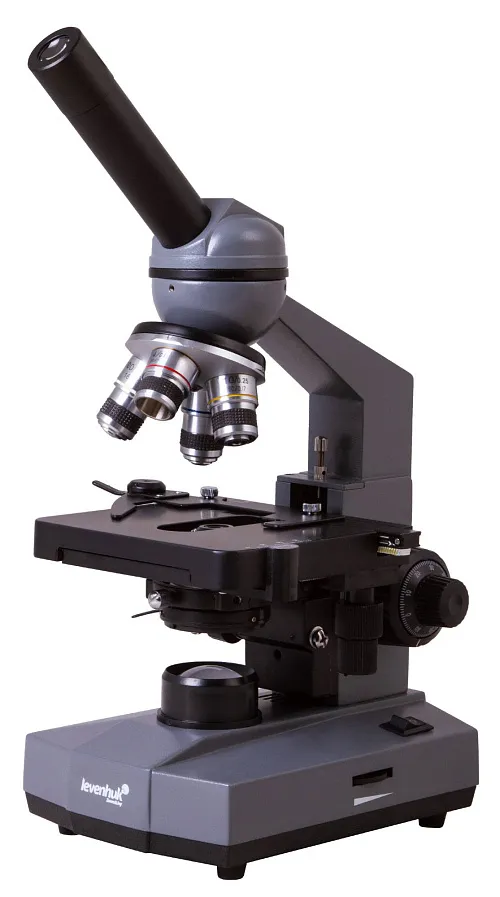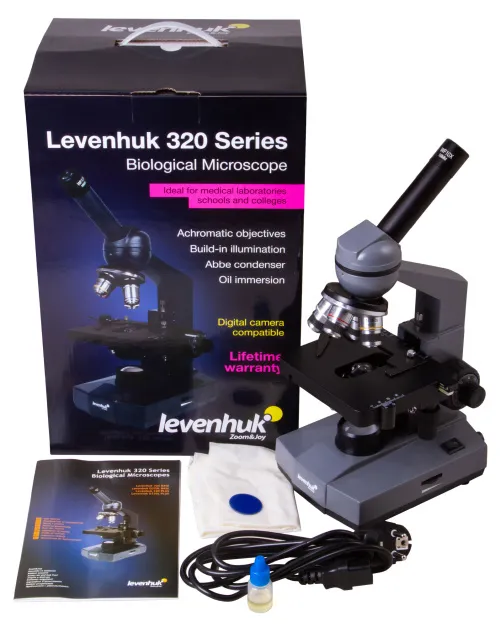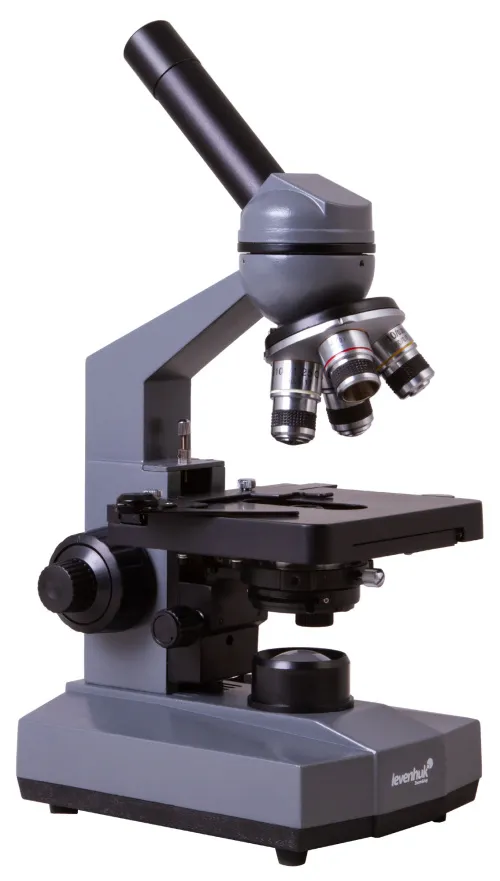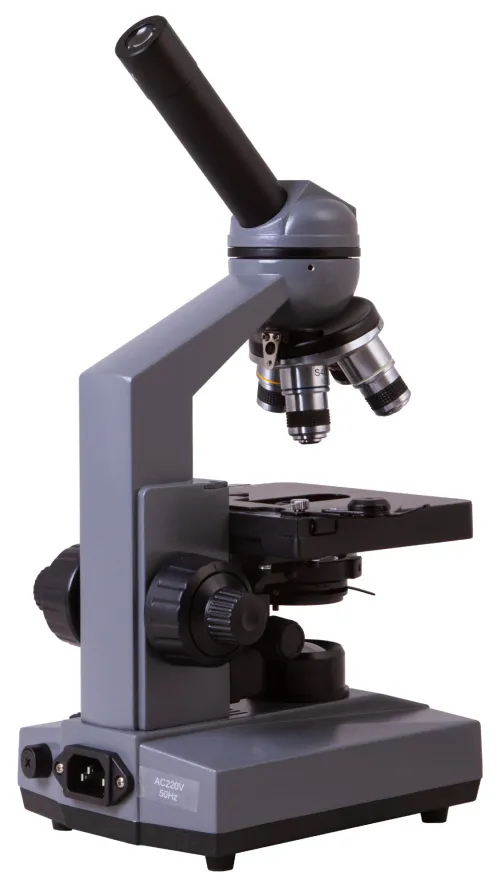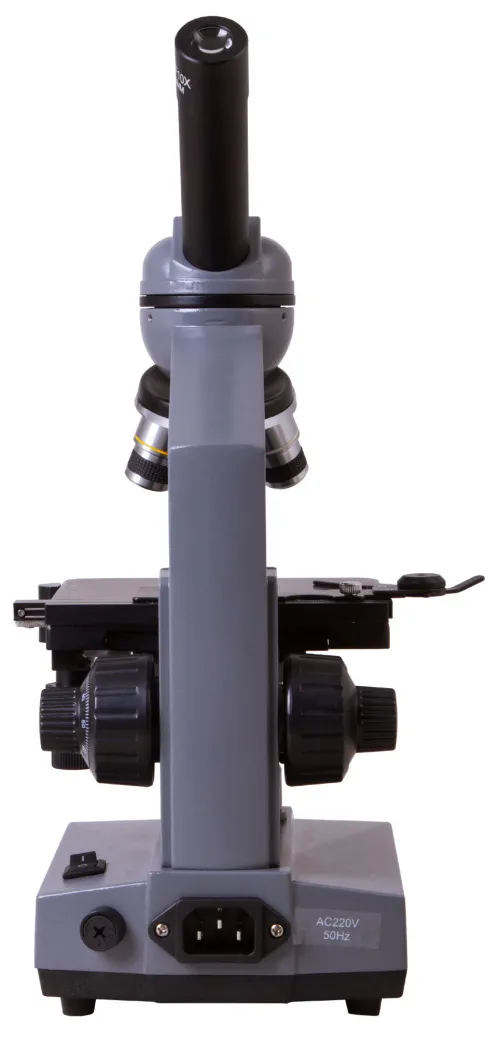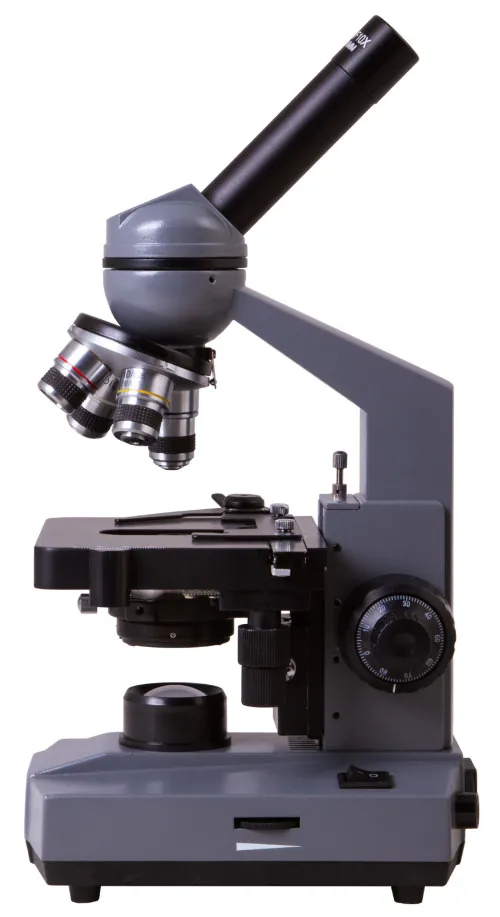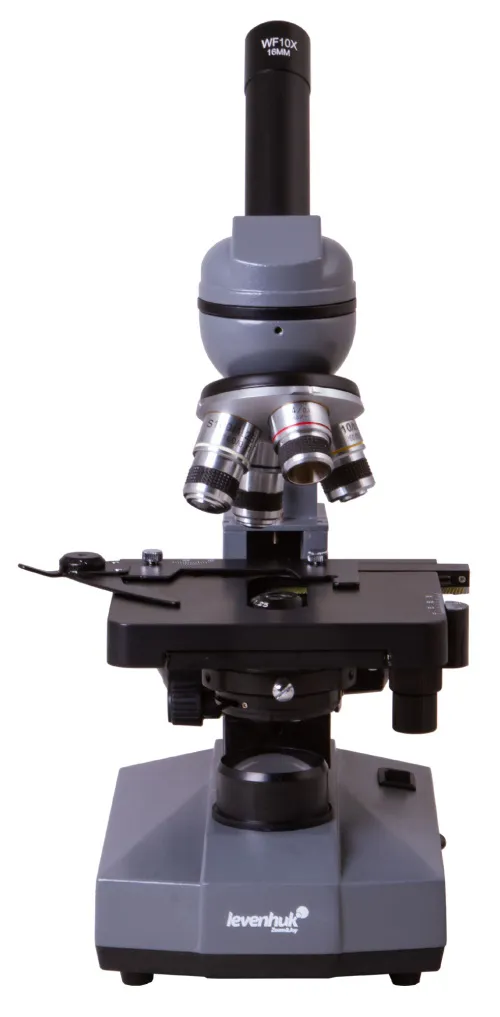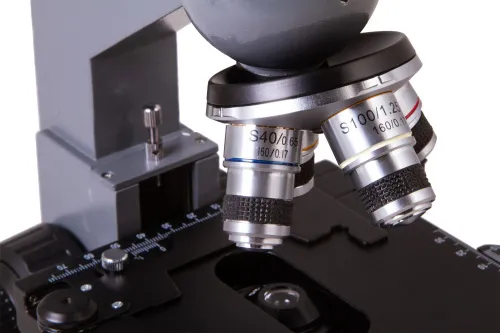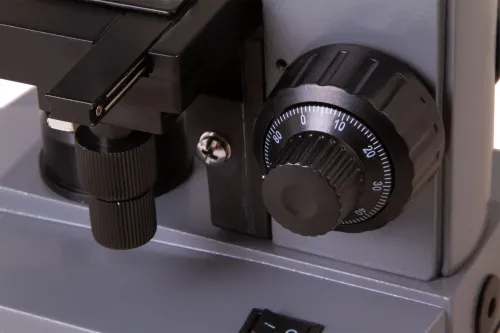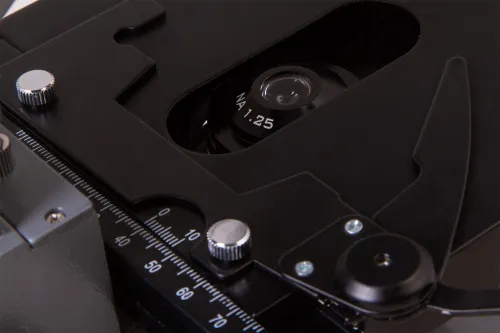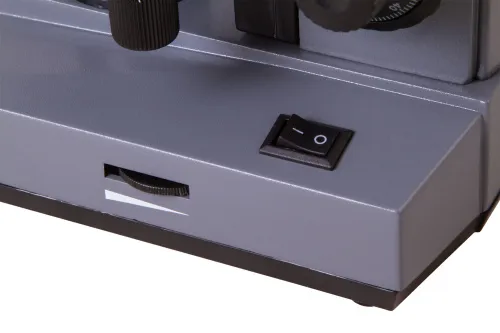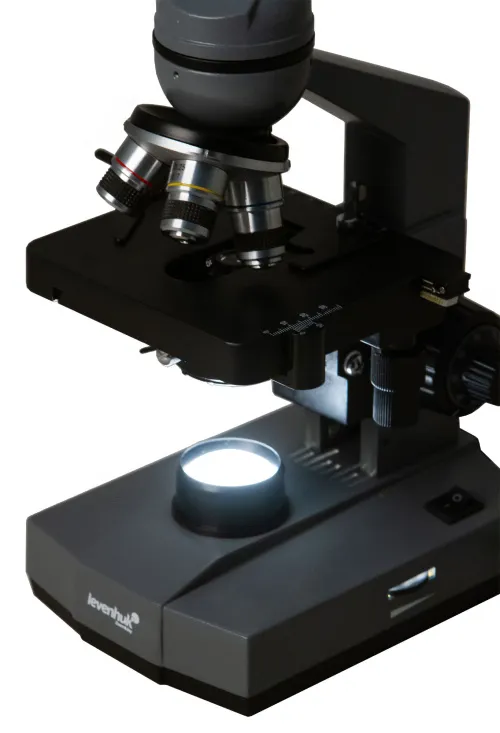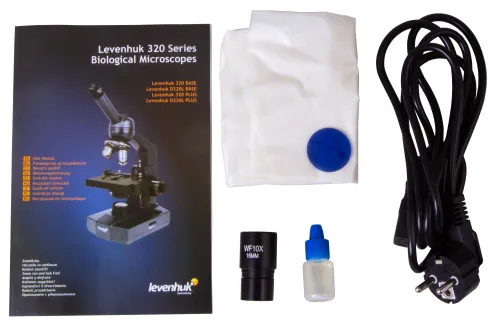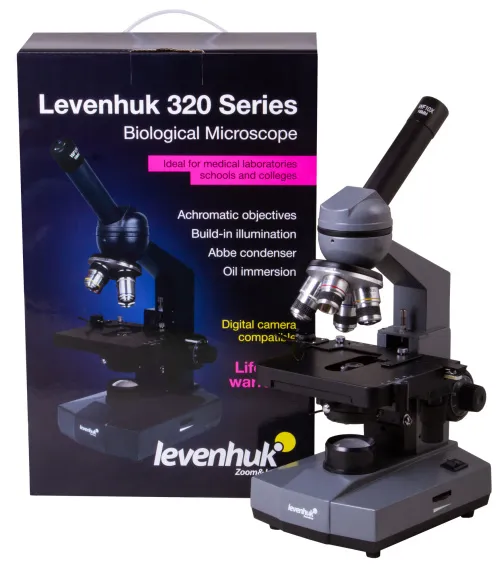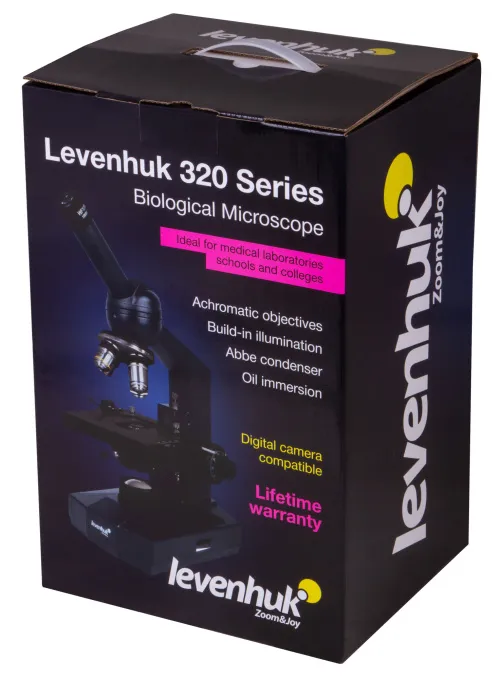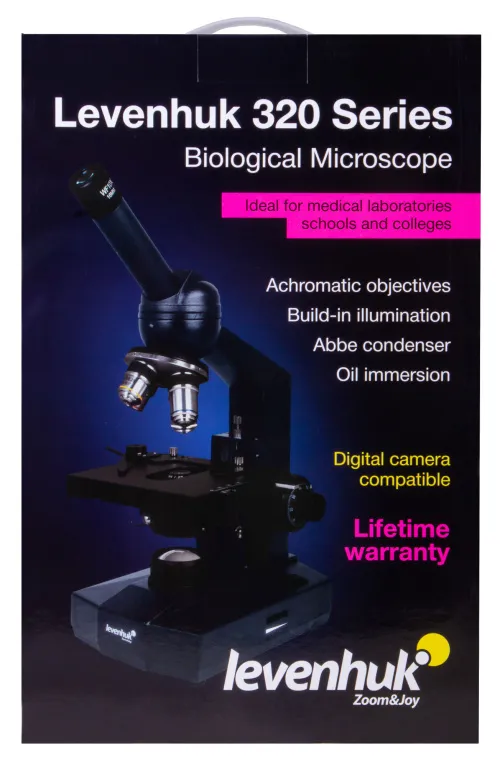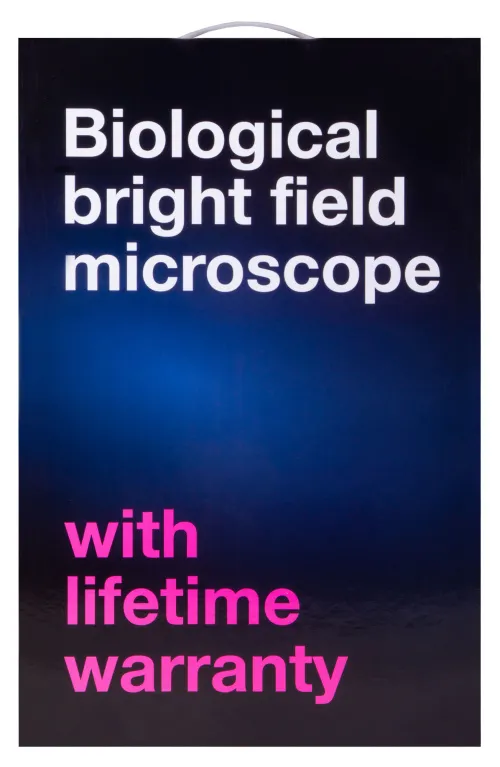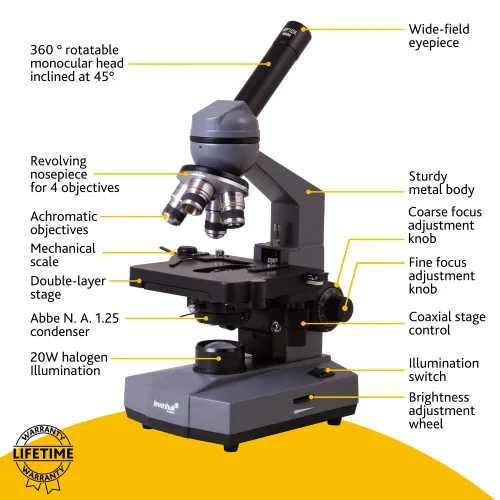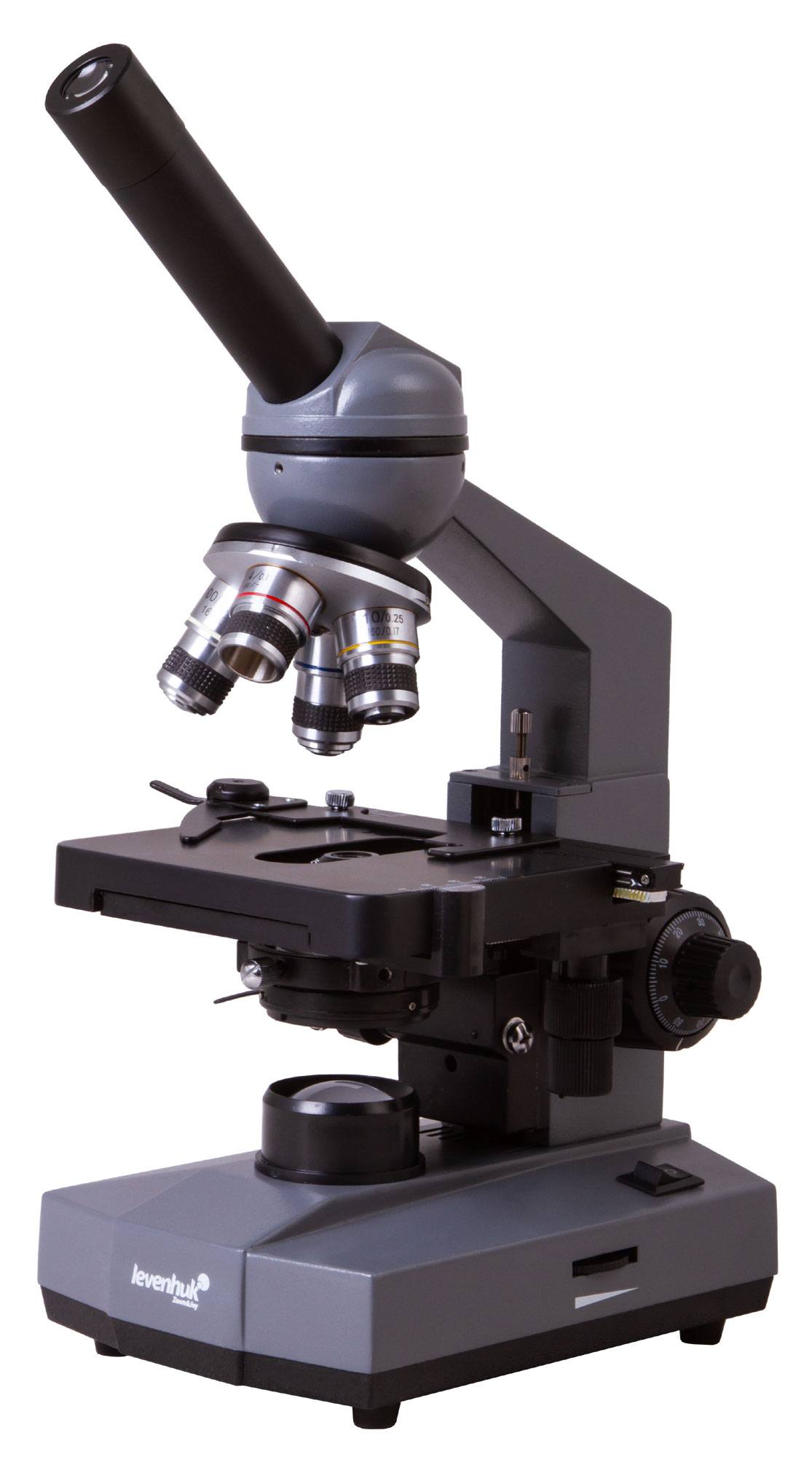Levenhuk 320 BASE Biological Monocular Microscope
Monocular microscope for laboratory research with halogen lighting. Magnification: 40–1000x
| Product ID | 73811 |
| Brand | Levenhuk, Inc., USA |
| Warranty | lifetime |
| EAN | 5905555004518 |
| Package size (LxWxH) | 39x25x21 cm |
| Shipping Weight | 3.32 kg |
Levenhuk 320 BASE monocular laboratory microscope is an excellent choice for equipping a medical laboratory, educational institute, or a scientific and educational center. This microscope performs great in any kind of microbiological research: cytological, histological, hematological, and more. Demanding professionals and specialists in different scientific fields appreciate the microscope's possibilities.
The optics provide magnification in a range from 40x to 1000x. Due to the achromatic optics, a transmitted image features high sharpness and contrast. The monocular head is 360° rotatable, a wide-angle eyepiece provides an excellent field of view. Coarse and fine focusing knobs are used for sharpness adjustment.
A microscope stage is equipped with a mechanical scale for precise placing of specimens. There is an Abbe condenser with an iris diaphragm under a stage, and halogen illumination underneath. Illumination features adjustable brightness. It is powered by an AC supply.
Levenhuk 320 BASE can be used for observations using the brightfield research method or oil immersion. All research is conducted in the transmitted light.
Features:
- Laboratory microscope with 40–1000x magnification
- Monocular 360° rotatable head
- Achromatic lenses and wide-angle eyepiece
- 20W halogen illumination with brightness adjustment
- Powered by an AC supply
The kit includes:
- Microscope
- Achromatic objective lenses: 4x, 10x, 40x and 100x (oil immersion)
- Wide-angle WF10x eyepiece
- Blue filter
- Bottle of immersion oil
- AC adapter
- Dust cover
- User manual and lifetime warranty
Caution! Remember that mains voltage in the U.S. and Canada is 110V and 220–240V in most European countries. Please refer to the specifications table for the correct mains voltage and never attempt to plug a 110V device into 220V outlet and vice versa without using a converter.
Some things you can see under a microscope:





Levenhuk 320 BASE Microscope is compatible with Levenhuk digital cameras (purchased separately). Levenhuk cameras are installed in the eyepiece tube instead of an eyepiece.
| Product ID | 73811 |
| Brand | Levenhuk, Inc., USA |
| Warranty | lifetime |
| EAN | 5905555004518 |
| Package size (LxWxH) | 39x25x21 cm |
| Shipping Weight | 3.32 kg |
| Type | biological, light/optical |
| Microscope head type | monocular |
| Optics material | optical glass |
| Head | 360 ° rotatable |
| Head inclination angle | 45 ° |
| Magnification, x | 40 — 1000 |
| Eyepiece tube diameter, mm | 23.2 |
| Eyepieces | WF10x |
| Objectives | achromatic: 4x, 10x, 40xs, 100xs (oil immersion) |
| Revolving nosepiece | for 4 objectives |
| Stage, mm | 110x125 |
| Stage moving range, mm | 58/25 |
| Stage features | mechanical double-layer |
| Condenser | Abbe N. A. 1.25 with an iris diaphragm |
| Diaphragm | iris |
| Focus | coaxial, coarse (20mm) and fine (0.002mm) |
| Body | metal |
| Illumination | halogen |
| Brightness adjustment | ✓ |
| Power supply | 220V/50Hz |
| Light source type | 20W |
| Light filters | blue |
| Additional | immersion oil included |
| User level | beginners, experienced users |
| Assembly and installation difficulty level | easy |
| Application | school/educational, laboratory/medical |
| Illumination location | lower |
| Research method | bright field |
| Pouch/case/bag in set | dust cover |
We have gathered answers to the most frequently asked questions to help you sort things out
Find out why studying eyes under a microscope is entertaining; how insects’ and arachnids’ eyes differ and what the best way is to observe such an interesting specimen
Read this review to learn how to observe human hair, what different hair looks like under a microscope and what magnification is required for observations
Learn what a numerical aperture is and how to choose a suitable objective lens for your microscope here
Learn what a spider looks like under microscope, when the best time is to take photos of it, how to study it properly at magnification and more interesting facts about observing insects and arachnids
This review for beginner explorers of the micro world introduces you to the optical, illuminating and mechanical parts of a microscope and their functions
Short article about Paramecium caudatum - a microorganism that is interesting to observe through any microscope

